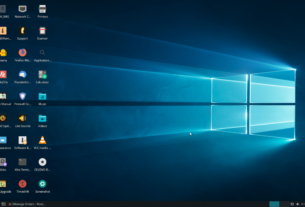Introduction
React Native, a popular framework for building cross-platform mobile applications, regularly releases updates and improvements to enhance performance, fix bugs, and introduce new features. However, upgrading React Native can be a complex process that requires careful consideration of version compatibility, code migration, and dependency management. In this article, we will explore the React Native upgrade process and provide helpful insights on version compatibility, code migration, performance optimization, and the importance of documentation.
Table of Contents
- Understanding the React Native Upgrade Process
- Importance of staying up-to-date
- Key considerations before upgrading
- Step-by-step upgrade process
- Ensuring Version Compatibility in React Native
- Understanding semver and React Native’s versioning scheme
- Checking compatibility with third-party libraries and dependencies
- Utilizing tools for version compatibility checks
- The React Native Upgrade Helper
- Introduction to the React Native Upgrade Helper
- Benefits and features of the Upgrade Helper
- How to use the Upgrade Helper effectively
- Managing React Native Dependencies
- Importance of managing dependencies
- NPM vs. Yarn: Choosing the right package manager
- Best practices for handling React Native dependencies
- Code Migration in React Native
- Understanding the impact of upgrading on existing code
- Identifying breaking changes and deprecated APIs
- Strategies for smooth code migration
- Optimizing React Native Performance
- Identifying performance bottlenecks
- Techniques for improving rendering and responsiveness
- Utilizing React Native performance optimization tools
- The Significance of React Native Documentation
- Exploring React Native’s official documentation
- Finding and utilizing external resources
- Contributing to the React Native documentation
1. Understanding the React Native Upgrade Process
Staying up-to-date with the latest versions of React Native is crucial to ensure access to new features, bug fixes, and security patches. Before starting the upgrade process, it’s essential to evaluate the potential impact on your existing codebase, consider the compatibility of third-party libraries, and have a thorough understanding of the steps involved in the upgrade.
2. Ensuring Version Compatibility in React Native
React Native follows semantic versioning (semver) principles to indicate compatibility and introduce breaking changes. It’s crucial to check the compatibility of the target version with the existing codebase and any dependencies or third-party libraries. Various tools and libraries can assist in determining version compatibility and identifying potential issues before upgrading.
3. The React Native Upgrade Helper
The React Native Upgrade Helper is a valuable tool that simplifies the upgrade process by automating tasks such as code changes, dependency updates, and resolution of common issues. This tool provides a guided approach and helps streamline the upgrade process, reducing manual effort and potential errors.
4. Managing React Native Dependencies
Proper management of dependencies is crucial for a successful React Native upgrade. Choosing the right package manager, such as NPM or Yarn, can significantly impact the reliability and efficiency of your project. Additionally, adhering to best practices like regularly updating dependencies and resolving version conflicts is essential to maintain a stable application.
5. Code Migration in React Native
Upgrading React Native often involves migrating existing code to adapt to breaking changes or deprecated APIs. This process requires careful analysis of the project’s codebase, identifying and addressing deprecated features, and implementing suitable alternatives. Employing effective strategies and utilizing available migration guides can help smoothen the code migration process.
6. Optimizing React Native Performance
React Native offers several techniques to optimize the performance of mobile applications. Identifying and addressing performance bottlenecks, utilizing code optimization strategies, and leveraging tools like
React Native performance optimization tools, such as:
- React Native Performance Monitor: This tool allows developers to monitor the performance of their React Native applications in real-time. It provides insights into CPU usage, memory consumption, and rendering performance, helping identify areas that need optimization.
- React Native Debugger: The React Native Debugger is a standalone app that provides a debugging environment for React Native applications. It allows developers to inspect and profile their application, enabling them to identify and resolve performance issues efficiently.
- Performance Profiling with Flipper: Flipper is a debugging tool that supports performance profiling for React Native applications. It provides detailed information about UI rendering, network requests, and asynchronous operations, helping developers optimize their app’s performance.
- React Native Hermes: Hermes is a JavaScript engine optimized for running React Native applications on Android. It improves startup time, reduces memory usage, and enables faster JavaScript execution, resulting in enhanced performance for React Native apps.
- Bundle Size Optimization: Optimizing the size of the JavaScript bundle generated by React Native is crucial for improving performance. Techniques such as code splitting, lazy loading, and removing unused dependencies can significantly reduce the bundle size and enhance app startup time.
7. The Significance of React Native Documentation
React Native’s official documentation serves as an invaluable resource for developers. It provides comprehensive guides, API references, and examples, enabling developers to understand the framework’s core concepts and utilize its features effectively. Additionally, the React Native community actively contributes to documentation, sharing best practices, troubleshooting tips, and tutorials, making it an essential reference for developers at all levels.
Finding and utilizing external resources, such as blog posts, video tutorials, and community forums, can further complement the official documentation. These resources offer insights, real-world examples, and practical advice from experienced React Native developers, helping expand your knowledge and problem-solving skills.
Contributing to the React Native documentation is also encouraged. Sharing your experiences, documenting common issues you encountered during upgrades, and providing solutions can benefit the community and foster a collaborative environment.
Conclusion
Upgrading React Native and ensuring version compatibility is essential for staying up-to-date with the latest features, bug fixes, and performance improvements. By understanding the React Native upgrade process, utilizing tools like the React Native Upgrade Helper, managing dependencies effectively, migrating code carefully, optimizing performance, and leveraging documentation resources, developers can successfully navigate the upgrade journey and build robust, high-performance React Native applications.
Remember, while the upgrade process may require effort and attention to detail, the benefits of an upgraded React Native application will undoubtedly enhance the user experience and keep your app competitive in the ever-evolving mobile development landscape.



